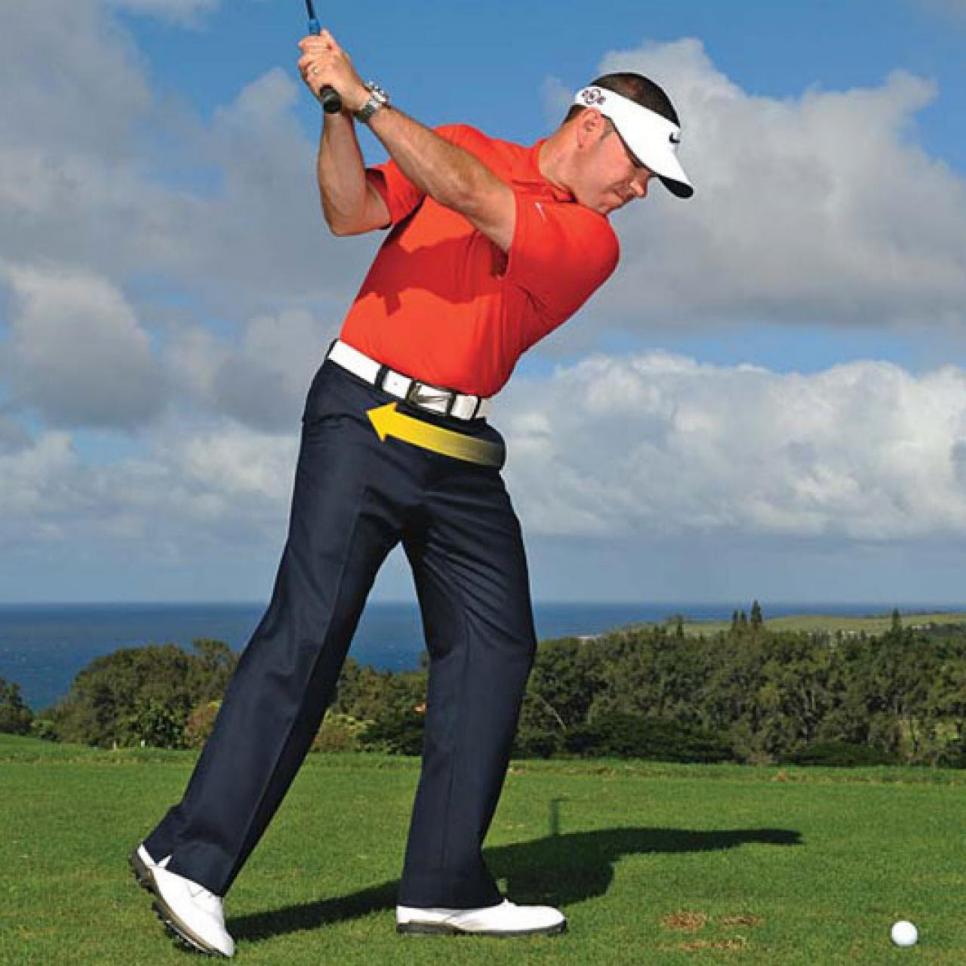I’ve found myself watching lots of Yankees games since the start of the MLB season. One thing I always find fun and interesting whenever I do is seeing how closed-off Yankees power hitter Giancarlo Stanton’s stance is.
Most baseball players stand with an open stance, meaning their lead foot is further away from home plate than their trail foot. But Stanton is a rare exception. For various reasons over the years he’s developed a closed stance where his lead foot is closer to home plate, and his trail foot is dropped back.
You can see it below, milliseconds before Stanton hit a grand slam home run against the Blue Jays a few weeks ago.
1.jpg.rend.hgtvcom.966.544.suffix/1714560905233.jpeg)
Why am I telling you this? Well, because this closed stance swing is something a lot of golfers can benefit from.
Bigger turn
A lot of older pro golfers drop their right foot back a touch at setup as they get older. It’s small tweak that can lead to some big distance gains, for two reasons:
1. Dropping your trail foot back a few inches opens up your hips, allowing for a bigger hip turn and better load on the backswing.
2. It can promote a more in-to-out path, which can help groove a draw.

Even the legendary left-to-right fader Lee Trevino, who, at 84 years old now hits draws, does this.
The picture below is from the PNC Championship last December: look how his right foot is dropped back, pointing his stance way out to the right compared to where his clubface is pointing.
 Powerful shift
Powerful shift
Many players hit a few balls with an extreme lead-foot-forward drill on the range. You can see PGA Tour player Sam Ryder doing it below.
Sam Ryder practicing pivoting around his lead leg pic.twitter.com/jDU7uoCLWz
— LKD (@LukeKerrDineen) January 1, 2024
The main benefit of this drill is that, with your trail foot dropped so far back, you’re so far away from the ball on the backswing that the only way to get back to the ball is to shift aggressively into your lead foot on the downswing. It forces you to shift onto your front leg, which helps you turn powerfully back up and around on the way through.
Crispy contact
You can do the same drill around the greens. The only real difference is that when you practise hitting chips like this, drop your trail foot back then lift your trail heel off the ground, so you’re on the toes of that foot.
As Shauheen Nakhjavani, a Golf Digest Best International Teacher explains below, the benefit here is that it puts all your weight on your lead leg during your chipping stroke, then forces you to keep it there as you turn around that leg.
It’s an essential for crispy, ball-first contact.
It’s not a magic bullet for every golfer, because nothing is. But perhaps something useful to incorporate, either on the range or on the course.
A great drill for those of you who have the tendency to hang back on chip shots and bottom out early or struggle with low point issues in general. This helps keep the weight forward and the upper body turning through it well. If TOUR players are doing it, you should too! pic.twitter.com/XoMj9tTXCs
— Shauheen Nakhjavani (@shkeengolf) June 16, 2022




